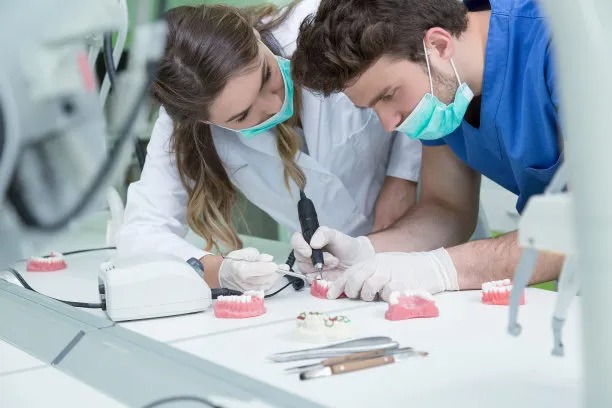The Essential Guide to Safely Extract a Tooth at Home and When to Seek Professional Help
Summary: This article provides a comprehensive guide for individuals considering tooth extraction at home, covering essential safety tips and the appropriate circumstances for such procedures. It emphasizes the importance of understanding when it is safe to attempt an at-home extraction and how to identify signs that professional dental help is necessary. The article explores preparation steps, safe extraction techniques, post-extraction care, and the right indicators for seeking professional assistance. By the end of this guide, you will be informed about the risks and proper methods for tooth extraction and better equipped to make the right decision regarding your dental health.
1. Preparing for At-Home Tooth Extraction

Before attempting to extract a tooth at home, proper preparation is crucial. Begin by assessing the tooth that needs to be removed. Is it loose, damaged, or causing severe pain? Identifying the situation will help determine if home extraction is the right course of action. If the tooth is still firmly rooted, it is advisable to consult a dentist.
Next, gather the necessary tools. Safety should be your top priority. Essential items include clean gloves, gauze, dental floss, and a pair of sterilized pliers. Having antiseptic on hand can also help minimize the risk of infection. Ensuring that everything required for the procedure is organized before starting can lead to a smoother extraction process.
Consider setting a calming atmosphere. Anxiety can elevate pain perception, making the procedure more uncomfortable. Deep breathing and focusing on a task can help remain calm. Additionally, arranging for a friend or family member to assist can provide both moral support and help to manage any potential complications.
2. Safe Tooth Extraction Techniques
Once you have prepared the necessary tools and environment, you can proceed to the extraction process. Begin by thoroughly washing your hands and donning the gloves. Apply pressure with gauze to stop any bleeding before starting the extraction. Carefully grasp the tooth with the sterilized pliers, ensuring not to crush it in the process.
Twisting the tooth gently while applying gradual pressure can facilitate its removal. Avoid using excessive force, as this may cause injury to surrounding gums and teeth. If the tooth does not come out easily, do not continue extracting it鈥攖his is a key indicator that professional help is likely necessary.
Upon extraction, place the tooth in a clean gauze pad and apply steady pressure to control bleeding. Its advisable to bite down gently on the gauze for about 30 minutes. During this time, remain still to avoid dislodging any clots that form, as these are essential for healing.
3. Post-Extraction Care and Recovery Tips
After successfully extracting the tooth, post-care is critical for recovery. Start by continuing to apply pressure on the gauze for a few hours to help control bleeding. Once it stops, replace the gauze with a clean one if necessary. Avoid rinsing your mouth immediately to allow blood clots to stabilize.
Diet also plays a crucial role in recovery. Stick to soft foods such as yogurt, applesauce, or mashed potatoes for at least 24 hours. Steer clear of hard, crunchy, or spicy foods that could irritate the extraction site. Hydration is essential, but avoid using straws, as the suction can dislodge the clot.
In addition to dietary restrictions, monitor your symptoms. Some pain and swelling are normal, but if you notice excessive bleeding, severe pain, or fever, these could indicate complications requiring immediate dental attention. Taking over-the-counter pain relief may be helpful, but always follow the dosing instructions.
4. When to Seek Professional Dental Help
There are specific indicators to remain vigilant about that suggest it鈥檚 time to reach out to a professional. If the bleeding persists beyond a few hours after extraction, this could be a sign of a complication requiring medical intervention. Additionally, if a significant amount of pain occurs that cannot be managed by over-the-counter medication, it鈥檚 essential to consult a dentist.
Signs of infection, such as increasing redness, swollen lymph nodes, or pus at the extraction site, are serious symptoms. Infections can lead to severe health issues and should not be ignored. Furthermore, if you experiencing difficulty swallowing or breathing, seek emergency assistance right away.
Lastly, if the tooth extraction does not seem to go as planned and roots or fragments remain in the gums, professional cleaning and follow-up may be necessary. Dentists have the expertise and tools to safely remove any remaining debris without causing further damage.
Summary:
This article emphasizes the importance of understanding the proper processes for at-home tooth extraction and the risks involved. It highlights the essential steps in preparation, safe extraction techniques, post-care, and indicators for when professional help is necessary. Adhering to these guidelines can enhance your safety and well-being during dental emergencies.
This article is compiled by Vickong Dental and the content is for reference only.



